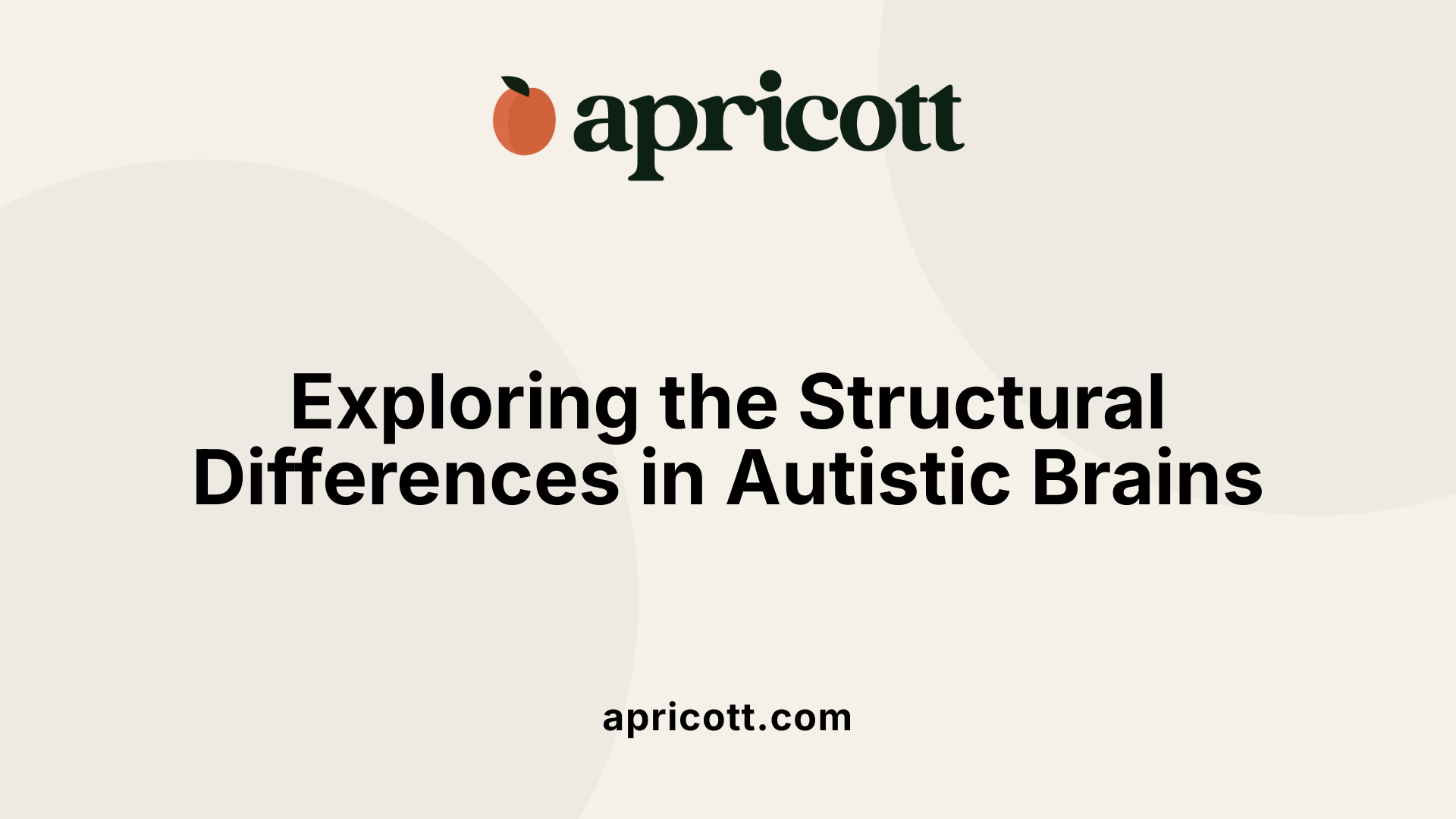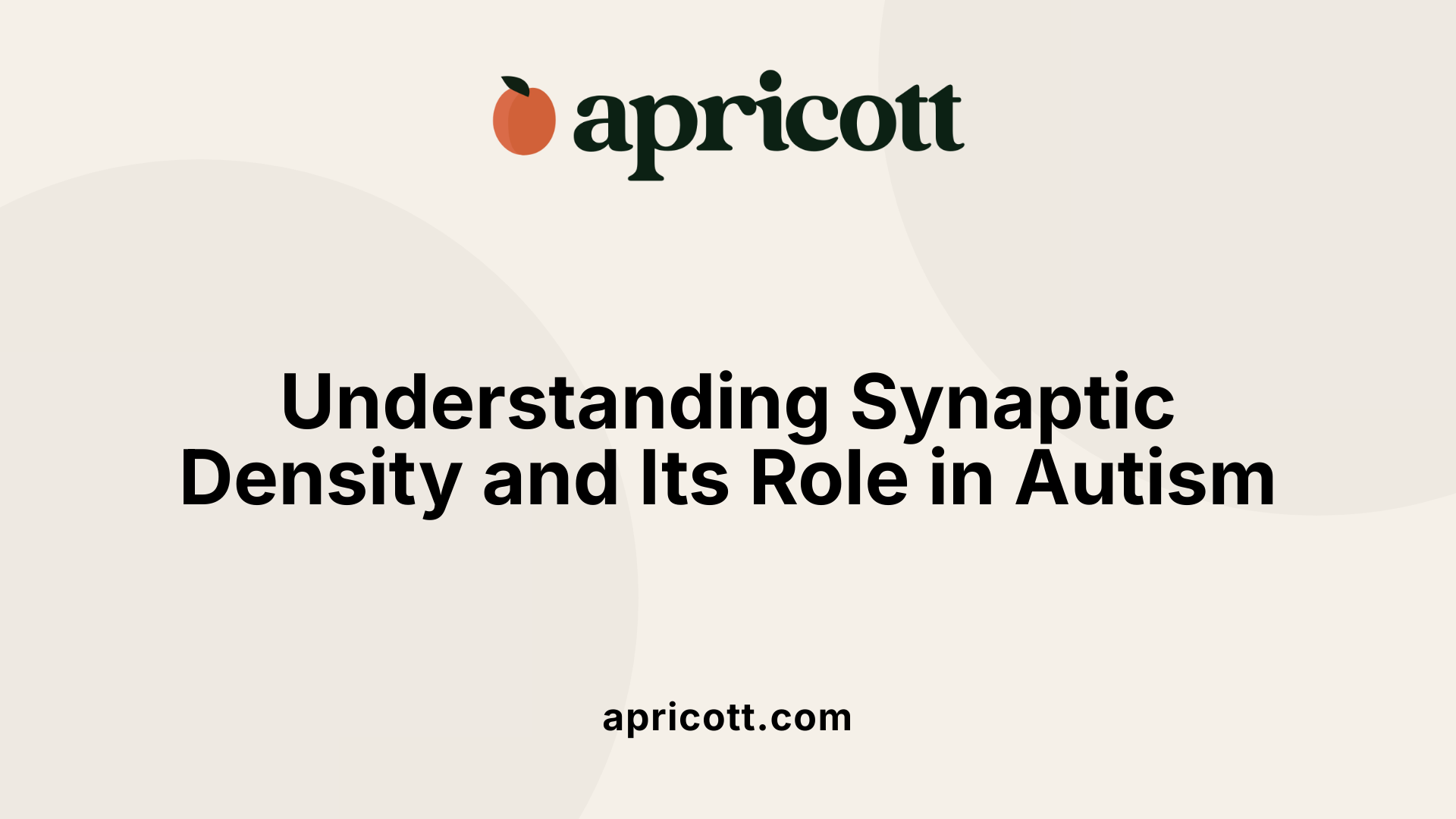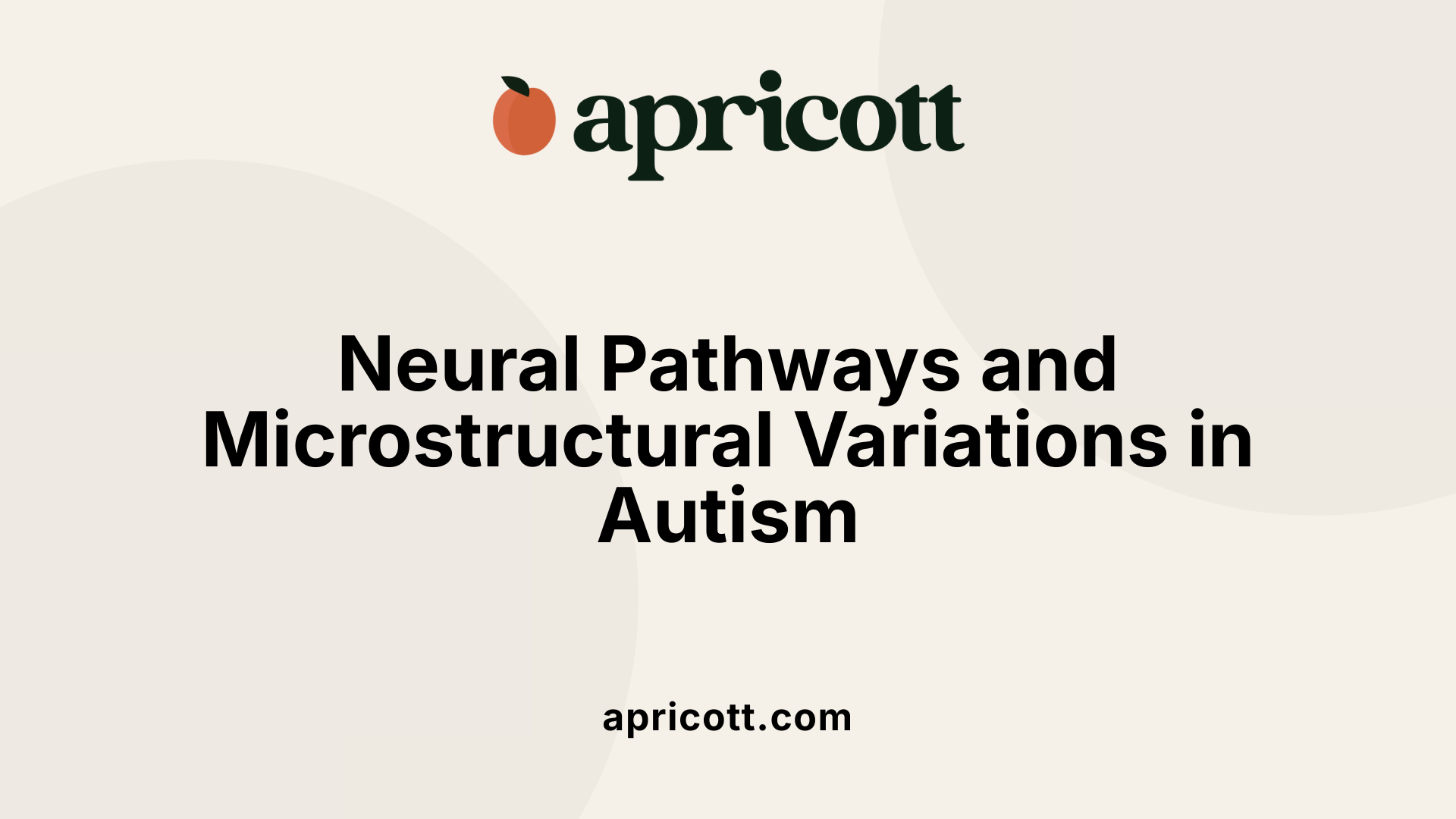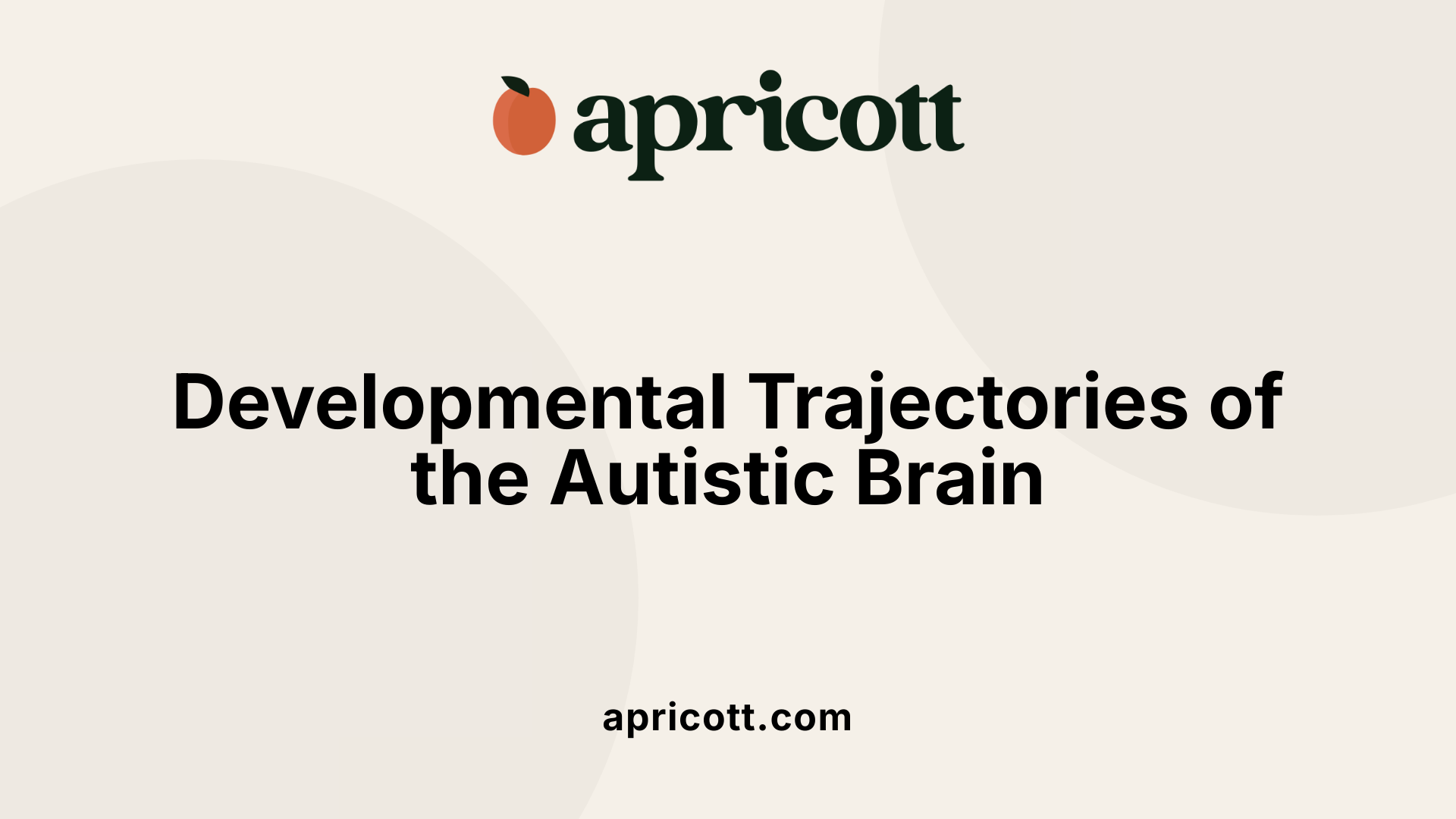August 15, 2025
Unraveling the Complexity of the Autistic Brain: Insights and Discoveries
Autism Spectrum Disorder (ASD) is a profound example of how diverse the human brain can be. This article explores the neural mechanisms, structural differences, developmental trajectories, and strengths of autistic brains, providing a comprehensive understanding of how they work. Recent scientific advances, including cutting-edge imaging techniques, have begun to shed light on the biological underpinnings of autism, paving the way for improved diagnosis, intervention, and societal support.

MRI studies have highlighted notable differences in the brain structure of autistic individuals compared to neurotypical people. These include variations in connectivity, size, and regional architecture. For instance, some regions show increased volume early in development, such as the amygdala, which is involved in emotion processing, while others, like parts of the cerebellum, tend to be reduced. These structural differences are thought to influence sensory processing, language development, and social behaviors. Additionally, regional microstructural alterations, such as changes in cortical organization and white matter connectivity, support the complex profile observed in autism.
Research indicates that some autistic brains may exhibit increased volume in specific areas, especially during early childhood. For example, early postnatal overgrowth of the frontal cortex is a common finding. Variations in brain size are region-dependent and not uniform across individuals. Despite some regions being larger or smaller, brain size alone does not correlate with intelligence or functional abilities. Many autistic individuals have average or above-average cognitive skills, and structural differences are better viewed as variations in organization rather than deficits.
Brain development in individuals with autism is a prolonged process that extends into adolescence and early adulthood. Neuroanatomical changes, such as the normalization or reduction of certain brain regions after early overgrowth, suggest ongoing development. While some structural differences persist, many autistic individuals experience improvements in social, emotional, and cognitive skills over time. The plasticity of the brain allows for growth and adaptation, which explains the variability within the spectrum.
The developmental trajectory of the autistic brain is dynamic and continues across the lifespan. Most structural changes occur from infancy through adolescence. Early rapid growth in brain regions like the cortex and amygdala is often followed by stabilization or even decrease in size during young adulthood. There is no fixed age at which development stops; rather, the brain continues to change and adapt well into early adulthood, with some regions reaching maturity later than typical neurodevelopmental timelines.
| Brain Region | Structural Change | Developmental Pattern | Possible Behavioral Impact |
|---|---|---|---|
| Amygdala | Early enlargement followed by size normalization | Overgrowth in early childhood, stabilization or reduction later | Social interaction and emotional response deficits |
| Frontal Cortex | Increased growth early, later normalization or reduction | Early overgrowth, then normalization in adolescence | Executive functions, decision-making |
| Cerebellum | Volume decrease, Purkinje cell loss | Microstructural reductions from early life | Motor coordination, cognitive processing |
| Cortical Microstructure | Altered minicolumn organization | Developmental changes in microcircuits | Language, sensory integration |
| White Matter Connectivity | Structural differences, corpus callosum variations | Continuous changes over development | Sensory processing, social communication |
In examining autism through advanced imaging techniques like PET scans, researchers have gained new insights into the neurobiological underpinnings. The use of groundbreaking radiotracers, such as 11C-UCB‑J, enables the measurement of synaptic density in living individuals. This approach revealed that autistic adults typically have about 17% fewer synapses across the brain compared to neurotypical adults. Such a reduction correlates with core behavioral features like social communication challenges, reduced eye contact, and repetitive behaviors.
Understanding these neuroanatomical and synaptic differences not only enhances our knowledge of autism's biological bases but also informs potential pathways for diagnosis and intervention. Tracking brain development over time helps define subtypes of autism and offers prospects for personalized therapies that target specific brain structures or pathways. Overall, these neuroimaging insights highlight the remarkable diversity in brain architecture within the spectrum, emphasizing the importance of tailored support and recognition of strengths alongside challenges.

Synaptic density refers to the number of synapses, the connections between neurons, in a given brain region. Recent advances have enabled researchers to measure this directly in living adults with autism using a novel technique. A groundbreaking PET scan study utilized a new radiotracer, 11C-UCB-J, developed at Yale, which binds specifically to synaptic proteins. This allowed scientists to visualize and quantify synaptic density across the brain.
The findings revealed that autistic adults tend to have about 17% fewer synapses overall compared to neurotypical individuals. This reduction in synaptic connections is associated with core autistic features such as social and communication difficulties, repetitive behaviors, and reduced eye contact. These insights provide a clearer understanding of the biological underpinnings of autism at the neural level.
Autistic brains often exhibit distinctive connectivity patterns. There tends to be increased short-range connectivity within local neural circuits, which can enhance focus and detail-oriented thinking. However, this is paired with decreased long-range connectivity between distant brain regions, which impacts the integration of information necessary for complex cognitive and social functions.
This imbalance in neural pathways results in distinctive information processing. For example, increased local connectivity may explain the detail-focused thinking and memory strengths seen in many autistic individuals. Conversely, reduced long-range connectivity can lead to challenges in social cognition, language processing, and flexible thinking.
The decreased synaptic density observed in the recent study suggests that autism involves a reduction in the number of neuronal connections. This can stem from various factors such as genetic influences, abnormal brain development, and changes in neural activity during critical periods of development.
Structural differences in the brain, including increased folding in specific regions like the left parietal and temporal lobes, may also be linked to how the brain compensates or adapts to these synaptic variations. Additionally, altered neural timing and signal transmission may further disrupt connectivity, impacting both local and global brain functions.
The observed neuroanatomical features, such as early growth abnormalities in the cerebellum and altered microstructure of the cortex, are likely related to these connectivity patterns. The reduced number of synapses may contribute to the atypical neural network dynamics that characterize autism.
This detailed view of synaptic density and neural pathways provides a mechanistic basis for the behavioral characteristics of autism. Recognizing these biological differences allows for the development of more targeted interventions that focus on enhancing neural connectivity or compensating for weaker pathways.
In the future, measuring synaptic density could become part of early diagnosis, helping identify autism sooner and more accurately. Additionally, therapies aimed at promoting synaptic growth or modifying neural activity, such as pharmacological agents or neurostimulation, may improve social, communication, and cognitive skills.
| Feature | Description | Significance |
|---|---|---|
| Synaptic density | 17% lower in adults with autism | Tied to core behavioral traits |
| Connectivity pattern | Increased short-range, decreased long-range | Impacts information integration |
| Brain structure | Increased folding, microstructural variations | Reflect developmental adaptations |
| Developmental trajectory | Early overgrowth, later changes | Affects neural maturation |
Understanding the complexities of neural connectivity and synaptic density supports a broader, more nuanced view of autism. It underscores that autism involves distinct neural architectures, which can guide personalized approaches to treatment and support.

Autistic brains exhibit several structural and functional differences compared to neurotypical brains. These include altered patterns of connectivity, regional abnormalities, and microstructural changes.
Structurally, autistic individuals often have increased folding of the brain surface, especially in regions such as the parietal, temporal, and frontal lobes. These areas are crucial for processing sensory information, language, and social interactions. Additionally, some regions like the amygdala show abnormal growth patterns; in children, the amygdala may enlarge early on, affecting social behavior, while in adults, its size varies, influencing emotional processing.
At the macro level, differences in overall brain volume and regional growth trajectories have been observed. For instance, early postnatal overgrowth of the frontal cortex is common, followed by normalization or reduction later in life. Cortical microstructure also varies, with alterations in minicolumn organization impacting neural communication.
Despite the diversity, common neuroanatomical features such as decreased Purkinje cells in the cerebellum and abnormalities in cerebellar volume underpin some of the motor and cognitive differences seen in autism.
Some of these neurodevelopmental variations are influenced by genetic and environmental factors, affecting how different parts of the brain develop and connect.
Yes, neural pathway utilization differs significantly in autistic brains. A predominant pattern involves short-range over-connectivity paired with long-range under-connectivity.
Short-range over-connectivity refers to increased local circuit connections within specific brain areas, amplifying focus on particular stimuli or interests. This is often linked to the enhanced memory and attention to detail seen in many autistic individuals.
Conversely, long-range under-connectivity hampers communication between distant brain regions. This disconnect can impair the integration of complex information, especially impacting social cognition, language, and adaptive behavior.
This imbalance in connectivity patterns influences how autistic brains process information, often resulting in unique strengths in detailed analysis but also difficulties with global integration.
Recent advances using positron emission tomography (PET) imaging have enabled scientists to measure synaptic density directly in living adults for the first time. A groundbreaking study employed a novel radiotracer, 11C-UCB‑J, developed at Yale, to assess synapse levels.
The findings reveal that autistic adults typically have approximately 17% fewer synapses across the brain compared to neurotypical peers. Fewer synapses mean less efficient neural communication, which correlates with characteristic autistic features like social-communication challenges, reduced eye contact, and repetitive behaviors.
This reduction in synaptic density offers mechanistic insight into autism, illustrating a possible neural basis for behavioral and cognitive differences. Understanding these structural differences opens pathways for targeted interventions and improvements in diagnosis.
| Brain Feature | Changes in Autism | Impact |
|---|---|---|
| Synaptic density | ~17% lower than neurotypicals | Linked to social and communicative difficulties |
| Regional volume | Overgrowth in early childhood, some reduction in adulthood | Affects cognitive and social processing |
| Cerebellar structure | Decreased Purkinje cells, volume changes | Impairments in coordination and cognition |
| Amygdala size | Early enlargement, later variability | Emotional regulation, social behavior |
| Cortical microstructure | Altered minicolumns, disorganization | Message processing and neural communication |
Studying these differences helps researchers classify subtypes within autism and tailor early interventions. Recognizing the structural and connectivity variances sheds light on why autistic brains function differently, highlighting both challenges and potential strengths.

Neuroanatomical differences in autism start early in development, often observable soon after birth. Infants later diagnosed with ASD may experience rapid growth in specific brain regions, especially during the first year of life, with notable enlargement of the amygdala and overgrowth of the frontal cortex from 6 to 12 months. These early changes set the stage for atypical developmental trajectories. As children grow, some regions’ sizes may normalize or even decrease prematurely, especially before reaching adulthood. These early structural deviations influence the emergence of behavioral features like social communication difficulties and repetitive behaviors that define autism.
Certain neuroanatomical features are frequently reported across individuals with ASD, despite broad variability. Early postnatal overgrowth of the frontal cortex is a common finding, indicating an initial rapid expansion of this region, which is critical for executive function and social behavior. The cerebellum, traditionally known for its role in motor control, also shows consistent abnormalities; notably, hypoplasia or reduced size of the cerebellar vermis lobules and the Purkinje cells. Other structural anomalies include altered cortical microstructure, such as disorganized minicolumns and patches of abnormal gene expression in the neocortex. Changes in the amygdala, involved in emotion and social processing, have been observed with early enlargement in children, which may later normalize.
The development of specific brain regions over time directly impacts behavioral traits seen in autism. Early enlargement of the amygdala correlates with difficulties in social interaction and communication, given its role in processing emotions and social cues. Disruptions in cortical microstructure—such as altered minicolumn organization—can impair complex information processing, leading to difficulties in language and cognitive flexibility. The growth patterns also influence sensory integration abilities, executive functions, and adaptability to environmental changes.
Adaptive outcomes depend on how these structural developments interact with environmental influences and interventions. For example, early detection of abnormal growth patterns may enable tailored therapies that promote more typical development trajectories, potentially mitigating some behavioral challenges. Overall, these neural developmental trajectories shape the social, communicative, and cognitive profile of individuals with autism, emphasizing the importance of early and ongoing support.
Autism Spectrum Disorder (ASD) is influenced by a complex interplay of genetic and prenatal factors. It has a strong genetic component, with numerous genes associated with brain activity, neural development, and synaptic functioning. Variability in these genes can affect the speed and efficiency of neural processes, potentially leading to atypical brain structure and connectivity observed in autistic individuals.
Furthermore, prenatal environments play a crucial role. Exposure to neurotoxic chemicals or adverse environmental factors during pregnancy can disrupt normal brain development. These exposures may interfere with neurotransmitter functions, crucial for neuronal communication and plasticity, thereby increasing the risk of ASD.
Initial studies indicated that early overgrowth of specific brain regions, like the frontal cortex, coincides with certain genetic markers. These alterations in early neurodevelopment are associated with both structural abnormalities and functional differences observed in autism.
Neurochemical systems are vital in regulating brain activity, and their disruption can contribute to autism traits. Neurotransmitters such as GABA (gamma-aminobutyric acid) and glutamate are central to maintaining the excitatory-inhibitory balance in the brain. Abnormalities in these systems can lead to micro-structural changes and altered neural connectivity pathways.
Research suggests that imbalances in neurotransmitter levels may underpin sensory processing difficulties, social impairments, and repetitive behaviors characteristic of ASD. These neurochemical disruptions could also influence the development and functioning of neural circuits involved in cognition and emotion.
Ongoing studies aim to better understand how neurochemical imbalances influence brain structure and behavior, potentially opening avenues for targeted treatments that modify neurotransmitter activity.
The potential role of neurotoxic compounds and environmental chemicals in autism has garnered increasing attention. Exposure to certain neurotoxins during critical periods of brain development can interfere with normal neurotransmitter functions and neural circuit formation.
While definitive mechanisms are still under investigation, some evidence links exposure to substances like pesticides, heavy metals, or industrial chemicals with an increased risk for ASD. These compounds may cause oxidative stress, inflammation, or disrupt synaptogenesis, contributing to the neurodevelopmental trajectory of autism.
Research continues to evaluate how timing, dosage, and specific chemical type influence their effects. Understanding these relationships could lead to policies that minimize harmful exposures during pregnancy and early childhood.
| Factors | Description | Impact on Autism |
|---|---|---|
| Genetic influences | Variations in numerous genes affecting brain development and synaptic function | Increased susceptibility to structural and functional brain differences |
| Prenatal factors | Exposure to neurotoxic chemicals or environmental stressors during pregnancy | Possible disruption of neurotransmitter systems and neurodevelopment |
| Environmental chemicals | Pesticides, heavy metals, industrial pollutants | Potentially interfere with neurological signaling and circuit formation |
| Neurotransmitter functions | GABA, glutamate, serotonin, and others | Imbalances may underpin behavioral and sensory features |
Understanding how these factors intertwine helps clarify the complex origins of autism. It underscores the importance of safeguarding prenatal health and minimizing exposure to harmful chemicals as part of broader strategies for early intervention and personalized supports.
Autistic brains often display impressive strengths that set them apart from neurotypical brains. These include exceptional memory skills, which allow individuals to recall detailed information accurately and quickly. Many autistic people exhibit heightened attention to detail, noticing patterns and nuances that might escape others. Problem-solving abilities are also prominent; scientific research shows that some individuals with autism solve complex problems about 40% faster than typically developing children. Logical reasoning and analytical thinking are often well-developed, making them particularly successful in disciplines like science, technology, engineering, and mathematics (STEM). These strengths may contribute to innovative thinking and unique approaches to challenges.
The way autistic brains handle information contrasts significantly with neurotypical processing. Autistic individuals tend to absorb and process a larger amount of information at the same time, often taking in more stimuli through their senses. In contrast, neurotypical brains usually manage around seven pieces of information simultaneously, enabling a more streamlined processing of incoming data.
This enhanced intake of information can sometimes lead to overload, causing feelings of anxiety or distress, especially when overwhelmed with too much fast-paced stimuli. However, this characteristic also supports remarkable abilities in pattern recognition, detailed analysis, and memory. Autistic brains may excel at recognizing complex patterns across different domains, which underpins many of their problem-solving talents.
Autistic individuals often exhibit distinct social and behavioral traits. Challenges in social communication can be linked to differences in how their brains evaluate social cues and process emotional information. For instance, they may focus intensely on specific interests—a behavior known as monotropism—strengthening their memory and understanding in those areas.
Autistic brains tend to prioritize information connected to personal interests, which can enhance learning and skills in specific domains. However, this focus can sometimes lead to challenges in shifting attention, especially when overwhelmed or faced with unfamiliar or unpredictable stimuli.
They also may show repetitive behaviors or routines as a way to manage sensory overload or stress. When overwhelmed, autistic brains may trigger 'Dino brain,' a protective response that limits new inputs to avoid damage from overload, sometimes resulting in meltdowns or emotional outbursts.
Understanding the unique ways autistic brains process information and their distinctive strengths can offer substantial societal benefits. Recognizing and valifying these cognitive differences fosters more inclusive environments in workplaces, schools, and communities.
Emphasizing strengths such as attention to detail, problem-solving, and innovation encourages societal appreciation of diversity. This perspective can lead to better employment opportunities, tailored educational strategies, and supportive policies that enable autistic individuals to reach their full potential.
Furthermore, autistic perspectives can contribute significantly to areas like technology development, scientific research, and creative pursuits. Their ability to see patterns and details unnoticed by others fosters innovation and problem-solving on a societal scale.
Promoting acceptance and understanding around these differences helps reduce stigma and encourages society to recognize neurodiversity as a form of natural variation—potentially enriching communities with new ideas, approaches, and ways of thinking.
| Aspect | Details | Additional Insights |
|---|---|---|
| Cognitive skills | Enhanced memory, attention to detail, problem-solving | Excels in STEM, pattern recognition |
| Information processing | Larger volume of information taken in, some overload risk | Supports detailed analysis and pattern detection |
| Social and behavioral traits | Focused interests, routines, sensory overload responses | May cause social challenges but also unique perspectives |
| Societal benefits | Innovation, problem-solving, diverse viewpoints | Empowers communities with diverse ways of thinking |
| Practical applications | Inclusive environments, tailored education, employment | Leads to societal growth and enriched problem-solving approaches |

Gaining insight into the brain's structure and function in autism transforms how clinicians diagnose and support autistic individuals. Advances such as the direct measurement of synaptic density through PET scans offer unprecedented detail about the autistic brain. This technology, utilizing novel radiotracers like 11C-UCB‑J developed with Yale, allows researchers to observe synaptic connections in living adults. Findings show a 17% reduction in synaptic density across the brain, linking these structural differences to behavioral traits such as social-communication challenges, repetitive behaviors, and reduced eye contact.
Understanding these neural differences enables earlier detection, especially when combined with behavioral assessments. More precise neuroimaging biomarkers refine diagnostic criteria, facilitating personalized approaches tailored to each individual's neural profile. This can lead to interventions that are more targeted and effective, addressing specific connectivity or plasticity issues. Furthermore, knowledge of altered synaptic and brain network functioning guides the development of therapies aimed at enhancing neural connectivity, potentially improving social skills and cognitive flexibility.
Future investigations are poised to deepen our understanding of neural development, plasticity, and environmental influences on autism. Longitudinal studies tracking brain changes from infancy through adulthood will clarify how neuroanatomical features evolve and relate to behavioral trajectories. Advanced imaging techniques, such as high-resolution MRI and PET, combined with cellular and genetic research, will reveal the microstructural and molecular underpinnings of autistic traits.
Research could explore how early overgrowth of specific regions like the frontal cortex and amygdala impacts later development and symptom severity. Investigating neuroplasticity—the brain's ability to adapt—may uncover intervention windows and strategies to optimize individual outcomes. Environmental factors, including prenatal influences and social experiences, will be scrutinized for their roles in shaping neural architecture.
By integrating genetic data with neuroimaging, scientists aim to identify biological subtypes within the autism spectrum. This stratification can lead to more personalized, effective therapies and inform societal perspectives on neurodiversity.
Viewing autism through a lens of difference rather than disorder fosters greater acceptance, respect, and appreciation of cognitive diversity. It shifts the narrative from pathology to variation, emphasizing that autistic traits are natural variations in brain functioning that can confer unique strengths, such as attention to detail, pattern recognition, and problem-solving skills.
This perspective encourages support systems designed to leverage individual talents while also providing accommodations for challenges. Tailored interventions that acknowledge strengths and preferences help autistic individuals thrive socially and professionally. Recognizing autism as a different way of thinking reduces stigma, promotes inclusiveness, and celebrates neurodiversity’s societal contributions.
In summary, integrating neurobiological insights into diagnosis and support strategies enhances personalized care. Continued research, particularly into brain development and plasticity, will further refine our understanding of autism. By embracing autism as a natural variation, society can foster environments where all individuals are valued for their unique perspectives and abilities.
| Aspect | Description | Supporting Details |
|---|---|---|
| Diagnostic Advances | Use of neuroimaging to identify structural brain features | PET scans measuring synaptic density; early detection potential |
| Support Strategies | Personalized interventions based on neural profiles | Targeted therapies focusing on connectivity and plasticity |
| Research Directions | Longitudinal, genetic, and environmental studies | Brain development trajectories; microstructural analysis |
| Perspectives on Autism | Viewing as a difference, not a disorder | Emphasizes strengths, promotes acceptance |
| Societal Impact | Reducing stigma; fostering inclusiveness | Celebrates neurodiversity and potential societal contributions |
Fostering a nuanced understanding of autism through neurobiological research not only enhances clinical practices but also promotes societal acceptance and integration, ensuring that autistic individuals are supported in a manner that honors their differences and celebrates their strengths.
Rich with neuroanatomical, cellular, and functional differences, the autistic brain embodies a spectrum of unique traits and strengths. As research continues to deepen our understanding—from synaptic density to neural connectivity—it becomes clear that autism is a complex interplay of biological factors that influence behavior and cognition. Appreciating these differences not only enhances diagnosis and intervention but also fosters societal acceptance and appreciation of neurodiversity.